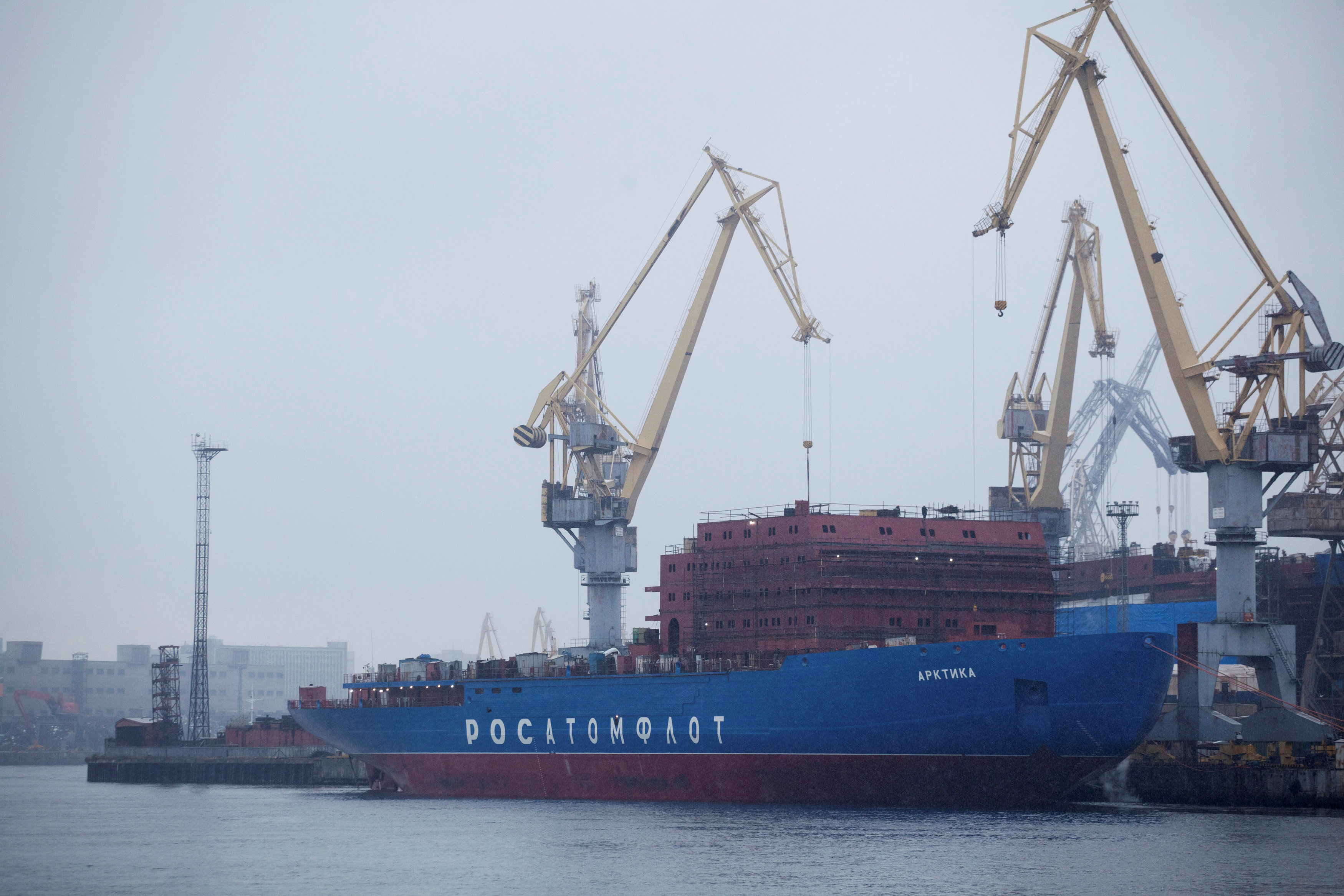Russia looks to add new nuclear icebreaking capacity

Russia is aiming to add three more nuclear icebreakers, two LK-60Ya-class and one LK-100Ya-class, in addition to the three LK-60Ya-class currently under construction, announced Stanislav Golovinsky, Deputy General Director for Development and head the Atomflot branch in Moscow at The Arctic-2017 conference in Moscow.
“The number of icebreakers should and will increase. Three double-draft nuclear-powered icebreakers — Arktika, Sibir and Ural — are being built. But it will be necessary to build a fourth and fifth icebreaker and the flagship icebreaker,” Golovinsky explained as reported by arctic.ru.
An ageing fleet faces increasing demand
Currently Russia operates six nuclear icebreakers: two shallow-draft river icebreakers Taymyr (in service since 1989) and Vaygach (1990) and four powerful Arktika-class icebreakers, Rossiya (1985), Sovetskiy Soyuz (1990), Yamal (1993), and 50 Let Pobedy (2007).
Dmitry Fishkin, Deputy Director of the Department for the Development of Interregional and Cross-Border Cooperation of the Economic Development Ministry sees a particular shortage in capacity starting in 2021. At this point many of Russia’s Arctic economic projects, including oil and gas developments, along the Northern Sea Route will become operational, while at the same time some of the existing nuclear icebreaker fleet will have reached the end of their lifetime operating limits.
[Northern Sea Route icebreaker escorts are up by 100 percent]
While the service life of nuclear icebreakers can be extended, three of the Arktika-type nuclear icebreakers have surpassed their original design limit of 100,000 hours over 26 years. Rossiya, commissioned in 1985, has been in operation for 31 years while accumulating more than 177,000 service hours.
Due to the shortage of immediate replacements, Golovinsky noted that Atomflot is currently working on extending capacity up to 250,000 hours. But even with additional measures to extend operational time, there are limits as to how much longer the three oldest nuclear icebreakers of the Arktika-class will be able to operate.
A new generation of nuclear icebreakers under construction
Russia began construction of a new generation of nuclear icebreakers to replace the Arktika-class in 2013. As of 2017 three ships of the new LK-60Ya-class have been laid down and the first vessel named Arktika was launched in June 2016 and is expected to enter service in 2018.
Two additional vessels, Sibir and Ural, are expected to follow into service by 2021. The LK-60Ya-type icebreakers will be slightly larger than the Arktika-class and will be the largest icebreakers operated by any country.
The goal of year-round commercial navigation
In addition, Russia is also in the process of finalizing design decisions for a new flagship icebreaker, called the LK-110Ya-class or Leader-class by 2018.
According to Golovinsky, the project’s planning costs total an estimated 1.3 billion rubles ($22.3 million) with 780 million rubles already set aside in the 2017 federal budget. Construction is expected to begin by 2021.
This latest class of icebreakers would be able to break up to 60 meters wide channels and escort up to 200,000 deadweight tonnage, compared to a 34 meters wide channel for the LK-60Ya-class.
The Leader-class will also be able to break thick winter ice up to 4.3 meters compared to around 2.8 meters for the LK-60Ya-class. A key aspect to ensuring reliable and speedy escorts for commercial vessels during winter is the Leader-class ability to break ice up to 2.5 meters (about 8 feet) thick continuously at 10 knots, a capability the current fleet of icebreakers lacks.